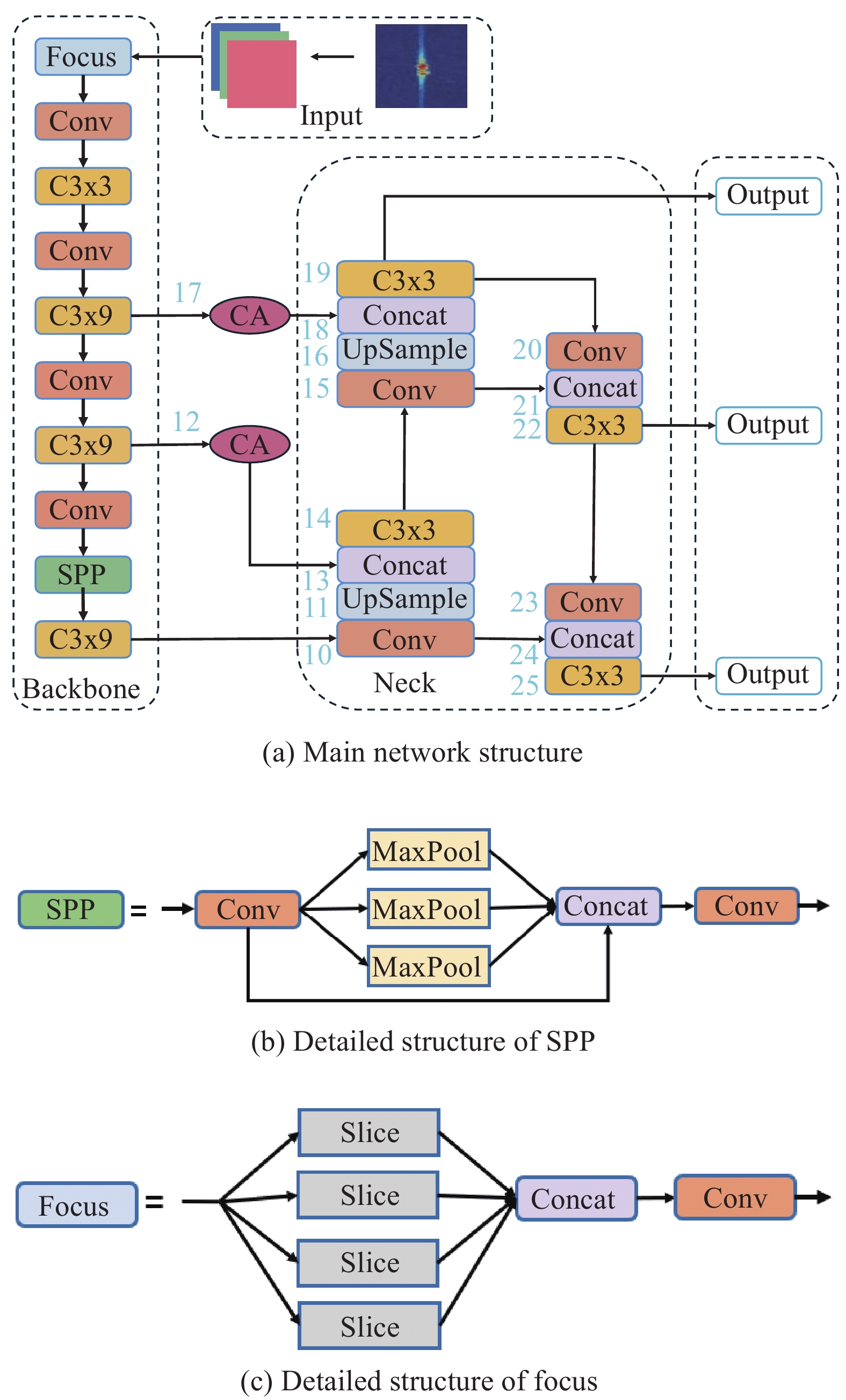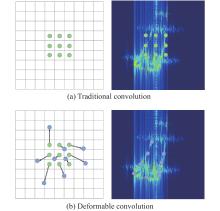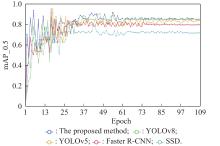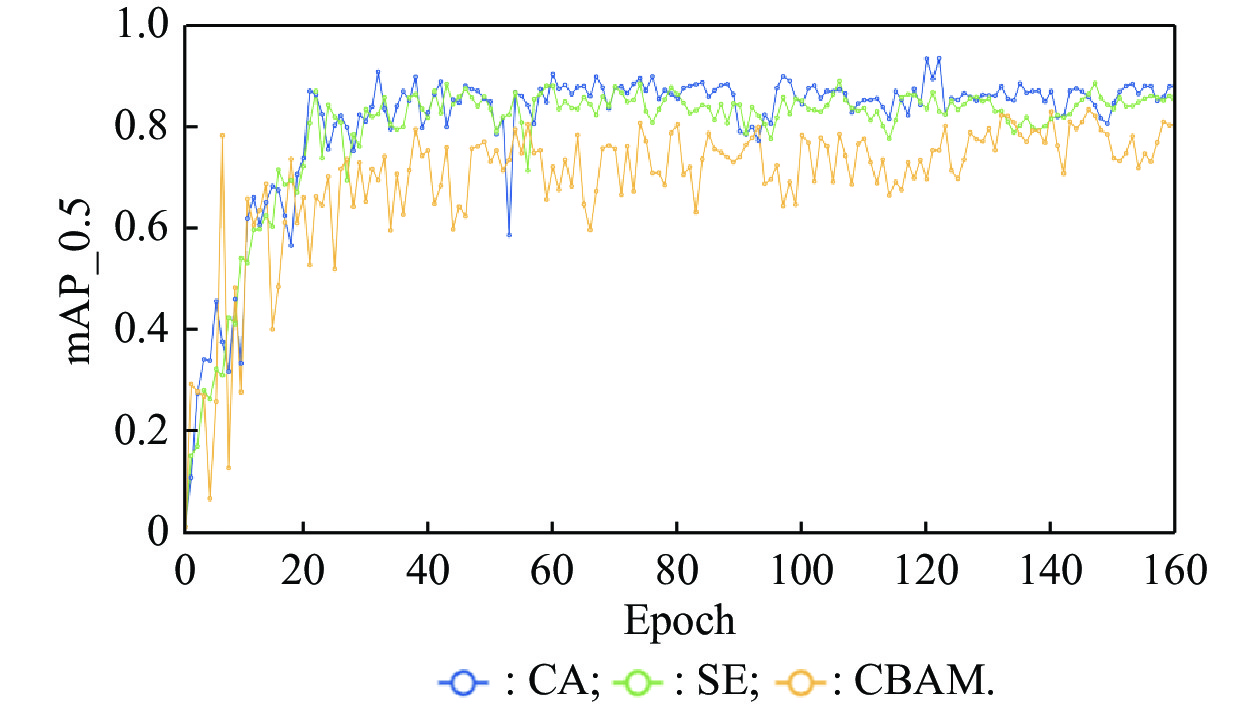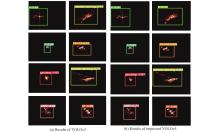| 1 |
LIU A F, ZHANG S H, ZHANG C, et al RaNeRF: neural 3D reconstruction of space targets from ISAR image sequences. IEEE Trans. on Geoscience and Remote Sensing, 2023, 61, 5107215.
|
| 2 |
ZHOU X Y, WANG Y, LU X F Approach for ISAR imaging of near-field targets based on coordinate conversion and image interpolation. Journal of Systems Engineering and Electronics, 2021, 32 (2): 425- 436.
doi: 10.23919/JSEE.2021.000036
|
| 3 |
JIN X F, SU F L, LI H X, et al Automatic ISAR ship detection using triangle-points affine transform reconstruction algorithm. Remote Sensing, 2023, 15 (10): 2507.
doi: 10.3390/rs15102507
|
| 4 |
YANG C L, ZHANG C, FAN Z L, et al. A multi-channel aggregation framework for object detection in large-scale sar image. Proc. of the IEEE International Conference on Acoustics, Speech and Signal Processing, 2023. DOI: 10.1109/ICASSP49357.2023.10096182.
|
| 5 |
ZHANG C Q, ZHANG Z W, CHONG M Z, et al. A joint unsupervised super-resolution and sar object detection network. Proc. of the 8th International Conference on Computer and Communication System, 2023: 1027–1030.
|
| 6 |
GUI S L, YANG Y, HU R Z, et al Dynamic ISAR imaging method for multiple moving vehicles based on OMP-CADMM. IEEE Trans. on Vehicular Technology, 2022, 71 (10): 10948- 10959.
doi: 10.1109/TVT.2022.3183796
|
| 7 |
BARBARY M, HAFEZ A S, ABD El-AZEEM M H, et al Extended drones tracking from ISAR images with Doppler effect and orientation based robust sub-random matrices algorithm. IEEE Trans. on Vehicular Technology, 2022, 71 (12): 12648- 12666.
doi: 10.1109/TVT.2022.3195810
|
| 8 |
YU C P, XIONG W, LI X Q, et al Deep convolutional neural network for meteorology target detection in airborne weather radar images. Journal of Systems Engineering and Electronics, 2023, 34 (5): 1147- 1157.
|
| 9 |
GONG Y C, ZHANG Z, WEN J B, et al Small ship detection of SAR images based on optimized feature pyramid and sample augmentation. IEEE Journal of Selected Topics in Applied Earth Observations and Remote Sensing, 2023, 16, 7385- 7392.
|
| 10 |
NOVAK L M, OWIRKA G J, BROWER W S, et al The automatic target-recognition system in SAIP. Lincoln Laboratory Journal, 1997, 10 (2): 187- 202.
|
| 11 |
SEUNG H S, LEE D D The manifold ways of perception. Science, 2000, 290 (5500): 2268- 2269.
doi: 10.1126/science.290.5500.2268
|
| 12 |
ANAGNOSTOPOULOS G C. SVM-based target recognition from synthetic aperture radar images using target region outline descriptors. Nonlinear Analysis: Theory, Methods & Applications, 2009, 71(12): e2934-e2939.
|
| 13 |
AMOON M, REZAIRAD G A Automatic target recognition of synthetic aperture radar (SAR) images based on optimal selection of Zernike moments features. IET Computer Vision, 2013, 8 (2): 77- 85.
|
| 14 |
KEYDEL E, LEE S. Signature prediction for model-based automatic target recognition. Proc. of the SPIE-Algorithms for Synthetic Aperture Radar Imagery III, 1996: 306–317.
|
| 15 |
OLIVA A, TORRALBA A The role of context in object recognition. Trends in Cognitive Sciences, 2007, 20 (11): 520- 527.
|
| 16 |
NING W, CHEN W G, ZHANG X G. Automatic target recognition of ISAR object images based on neural network. Proc. of the IEEE International Conference on Neural Networks & Signal Processing, 2004: 373–376.
|
| 17 |
KARINE A, TOUMI A, KHENCHAF A, et al Target recognition in radar images using weighted statistical dictionary-based sparse representation. IEEE Geoscience and Remote Sensing Letters, 2017, 14 (12): 2403- 2407.
doi: 10.1109/LGRS.2017.2766225
|
| 18 |
LEE S, LEE M, KIM K, et al Classification of ISAR images using variable cross-range resolutions. IEEE Trans. on Aerospace and Electronic Systems, 2018, 54 (5): 2291- 2303.
doi: 10.1109/TAES.2018.2814211
|
| 19 |
ZOU Q, NI L H, ZHANG T, et al Deep learning based feature selection for remote sensing scene classification. IEEE Geoscience and Remote Sensing Letters, 2015, 11 (12): 2321- 2325.
|
| 20 |
LUO Y S, XU J H, FENG C X, et al An accurate detection algorithm for time backtracked projectile-induced water columns based on the improved YOLO network. Journal of Systems Engineering and Electronics, 2023, 34 (4): 981- 991.
|
| 21 |
WANG Q, YUAN Z, DU Q, et al GETNET: a general end-to-end 2-D CNN framework for hyperspectral image change detection. IEEE Trans. on Geoscience and Remote Sensing, 2019, 57 (1): 3- 13.
doi: 10.1109/TGRS.2018.2849692
|
| 22 |
ZAIED S, TOUMI A, KHENCHAF A. Target classification using convolutional deep learning and auto-encoder models. Proc. of the International Conference on Advanced Technologies for Signal and Image Processing, 2018. DOI: 10.1109/ATSIP.2018.8364502.
|
| 23 |
DENG S, DU L, LI C, et al SAR automatic target recognition based on Euclidean distance restricted autoencoder. IEEE Journal of Selected Topics in Applied Earth Observations and Remote Sensing, 2017, 7 (10): 3323- 3333.
|
| 24 |
HUANG Z L, PAN Z X, LEI B Transfer learning with deep convolutional neural network for SAR target classification with limited labeled data. Remote Sensing, 2017, 9 (9): 907.
|
| 25 |
PEI J, HUANG Y L, HUO W B, et al SAR automatic target recognition based on multiview deep learning framework. IEEE Trans. on Geoscience and Remote Sensing, 2018, 4 (56): 2196- 2210.
|
| 26 |
HOU Q B, ZHOU D Q, FENG J S. Coordinate. attention for efficient mobile network design. Proc. of the Conference on Computer Vision and Pattern Recognition, 2021: 13708−13717.
|
| 27 |
CALDAROLA D, CAPUTO B, CICCONE M. Improving generalization in federated learning by seeking flat minima. Proc. of the European Conference on Computer Vision, 2022: 654−672.
|
| 28 |
REN S, HE K, GIRSHICK R, et al Faster R-CNN: towards real-time object detection with region proposal networks. IEEE Trans. on Pattern Analysis and Machine Intelligence, 2017, 39 (6): 1137- 1149.
doi: 10.1109/TPAMI.2016.2577031
|
| 29 |
CALDAROLA D, CAPUTO B, CICCONE M. Improving generalization in federated learning by seeking flat minima. Proc. of the European Conference on Computer Vision, 2022: 654–672.
|
| 30 |
HU J, SHEN L, SUN G. Squeeze and excitation networks. Proc. of the IEEE Conference on Computer Vision and Pattern Recognition, 2018: 7132–7141.
|
| 31 |
WOO S, PARK J, LEE J Y, et al. Cbam: convolutional block attention module. Proc. of the European Conference on Computer Vision, 2018: 3–19.
|
 ), Weilin LI3(
), Weilin LI3( ), Xiaoyi SUN2(
), Xiaoyi SUN2( ), Hanxi ZHAO2(
), Hanxi ZHAO2( ), Wentong CHEN2(
), Wentong CHEN2( ), Jing WU3,*(
), Jing WU3,*( )
)

